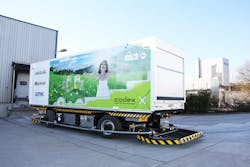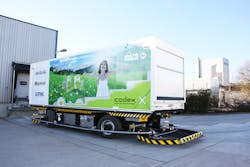Back in the 1980s I was working at Eaton in corporate research. A popular topic in industrial automation at that time was Automated Guided Vehicles (AGVs). They are still around; of course, they have their own website (http://www.automaticguidedvehicles.com/). There were systems that used wires in the floor to provide paths to follow, something like Elon Musk’s hyperloop tunnels with fixed paths. Other times the path was programmed into the unit, much like we have some cruise control systems for trucks that have memorized the route to save fuel without the need for wireless communications.
The systems had various means to detect a human walking in front of the vehicle including ultrasound, cameras, and cow catchers. Some of the research at that time was to use cameras with fixed emblems posted throughout the factory to guide the robotic vehicle, much as we now have systems that can identify stop signs and speed limit signs. These vehicles only moved at a few feet per second, not the 88 feet per second that a big rig going down the highway at 60 miles per hour is traversing.
I’ve often said over the last few years, that autonomous vehicles in controlled spaces, and on private land, are a good place to use the technology in a crawl before you walk before you run mode. Yard hostelers are going electric, with Kalmar announcing a five year supply agreement with TransPower. Kamag also announced an electric, autonomous vehicle that can be loaded and unloaded automatically. This looks, to me, just like an overgrown, super-sized AGV, complete with the cow catcher style system for detecting something to avoid going bump in the night or the daytime.
Still, if we don’t need a driver in the future, then tractors are not in your future.
About the Author
Paul Menig
CEO
Paul Menig is the CEO of Business Accelerants, a consulting company focused on helping companies succeed by leveraging technology in their products and processes.

